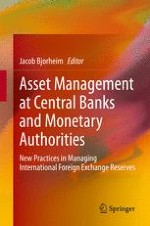2020 | OriginalPaper | Buchkapitel
8. Safe Assets and Reserve Management
verfasst von : Robert Neil McCauley
Erschienen in: Asset Management at Central Banks and Monetary Authorities
Verlag: Springer International Publishing
Aktivieren Sie unsere intelligente Suche, um passende Fachinhalte oder Patente zu finden.
Wählen Sie Textabschnitte aus um mit Künstlicher Intelligenz passenden Patente zu finden. powered by
Markieren Sie Textabschnitte, um KI-gestützt weitere passende Inhalte zu finden. powered by
